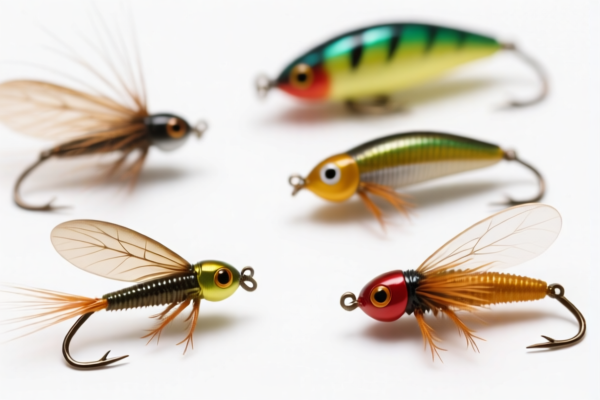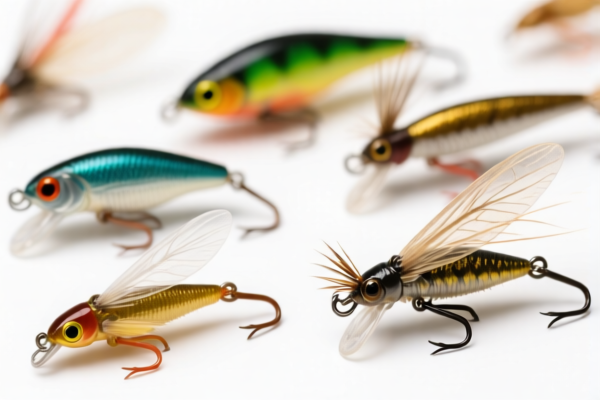| HS Code | Official Doc | Tariff Rate | Origin | Destination | Effective Date |
|---|---|---|---|---|---|
| 5608110010 | Doc | 63.0% | CN | US | 2025-05-12 |
| 5608191010 | Doc | 63.5% | CN | US | 2025-05-12 |
| 5607909000 | Doc | 61.3% | CN | US | 2025-05-12 |
| 4823901000 | Doc | 55.0% | CN | US | 2025-05-12 |
| 4823907000 | Doc | 55.0% | CN | US | 2025-05-12 |
| 4821904000 | Doc | 55.0% | CN | US | 2025-05-12 |
| 4821902000 | Doc | 55.0% | CN | US | 2025-05-12 |
| 9507902000 | Doc | 41.2% | CN | US | 2025-05-12 |
| 9507904000 | Doc | 43.1% | CN | US | 2025-05-12 |
| 9208100000 | Doc | 33.2% | CN | US | 2025-05-12 |
| 9208900040 | Doc | 42.8% | CN | US | 2025-05-12 |
| 4707900000 | Doc | 55.0% | CN | US | 2025-05-12 |
| 4707100000 | Doc | 55.0% | CN | US | 2025-05-12 |
| 4706100000 | Doc | 55.0% | CN | US | 2025-05-12 |
| 4706910000 | Doc | 55.0% | CN | US | 2025-05-12 |
| 3923900080 | Doc | 58.0% | CN | US | 2025-05-12 |




Fishing Material
Fishing materials encompass a broad range of substances used in the construction of angling equipment and the practice of fishing. These materials are selected for their strength, durability, buoyancy, flexibility, and interaction with aquatic environments.
Types of Materials
Fishing materials can be broadly categorized into natural and synthetic types:
1. Natural Materials:
- Silk: Historically used for fishing lines due to its strength and flexibility. Less common today due to the rise of synthetic alternatives.
- Cotton: Used for backing lines and sometimes for lines in coarse fishing. Prone to stretching and degradation.
- Flax: Used for making fishing nets and lines, historically significant but largely replaced by synthetic fibers.
- Animal Sinew: Traditional material for lines and nets, particularly in indigenous fishing practices.
- Wood: Used for constructing rods, floats, and various fishing tools. Species like bamboo, ash, and hickory are valued for their strength and flexibility.
- Feathers: Used in fly-tying for creating artificial insects and other lures.
- Hair: Used in fly-tying and for creating attractors.
2. Synthetic Materials:
- Nylon Monofilament: The most common type of fishing line. Known for its strength, elasticity, and affordability. Available in varying diameters and test strengths. Susceptible to UV degradation.
- Fluorocarbon: Nearly invisible underwater, offering low visibility. Higher density than nylon, causing it to sink faster. More abrasion-resistant than nylon but generally more expensive.
- Braided Line (Dyneema, Spectra, Kevlar): Composed of woven fibers offering exceptional strength and low stretch. Ideal for deep-water fishing, jigging, and situations requiring high sensitivity. Can be more difficult to knot securely.
- Polyester: Used for backing lines and sometimes for lines in coarse fishing, offering good abrasion resistance and low stretch.
- Carbon Fiber/Graphite: Predominantly used in the construction of fishing rods, providing high strength-to-weight ratio, sensitivity, and stiffness.
- Plastic: Used in a wide range of components, including floats, lures, reel seats, and tackle boxes. Various types of plastic are employed, including PVC, ABS, and polycarbonate.
- Metal: Used for hooks, weights, swivels, split rings, and reel components. Common metals include steel, stainless steel, aluminum, and titanium.
Purpose & Function
The materials used in fishing equipment serve several critical functions:
- Line: Connects the angler to the fish, transmitting force and providing control. Must have sufficient strength, flexibility, and abrasion resistance.
- Hooks: Securely capture fish. Materials and designs vary depending on the target species and fishing technique.
- Lures: Attract fish through visual, auditory, or olfactory stimuli. Materials influence buoyancy, action, and durability.
- Rods: Provide leverage and control during casting and retrieving. Material properties affect sensitivity, power, and flexibility.
- Floats: Indicate strikes and suspend bait at a desired depth. Material determines buoyancy and visibility.
- Weights: Sink bait or lures to the desired depth. Material affects density and sink rate.
Usage Scenarios
The choice of fishing material is highly dependent on the target species, fishing environment, and chosen technique:
- Freshwater Fishing: Nylon and fluorocarbon lines are commonly used for general freshwater fishing. Carbon fiber rods are popular for their sensitivity.
- Saltwater Fishing: Braided lines and fluorocarbon leaders are favored for their strength and abrasion resistance. Corrosion-resistant metals are essential.
- Fly Fishing: Silk, nylon, and fluorocarbon are used for leaders and tippets. Carbon fiber rods are standard.
- Ice Fishing: Specialized lines and rods designed for cold temperatures.
- Deep-Sea Fishing: Heavy-duty braided lines and robust rods are required.
Based on the provided information, “fishing material” can encompass several categories of goods. Here’s a breakdown of relevant HS codes:
-
9507.90.20.00: This HS code covers Fishing rods, fish hooks and other line fishing tackle; fish landing nets, butterfly nets and similar nets; decoy "birds" (other than those of heading 9208 or 9705) and similar hunting or shooting equipment; parts and accessories thereof: Other: Fishing line put up and packaged for retail sale.
- 95: Chapter 95 signifies Miscellaneous manufactured articles.
- 07: Heading 95.07 specifically relates to fishing rods, hooks, and tackle.
- 90.20.00: This subheading denotes fishing line prepared for retail sale.
-
9507.90.40.00: This HS code covers Fishing rods, fish hooks and other line fishing tackle; fish landing nets, butterfly nets and similar nets; decoy "birds" (other than those of heading 9208 or 9705) and similar hunting or shooting equipment; parts and accessories thereof: Other: Fishing casts or leaders.
- 95: Chapter 95 signifies Miscellaneous manufactured articles.
- 07: Heading 95.07 specifically relates to fishing rods, hooks, and tackle.
- 90.40.00: This subheading denotes fishing casts or leaders.
-
5608.11.00.10: This HS code covers Knotted netting of twine, cordage or rope; made up fishing nets and other made up nets, of textile materials: Of man-made textile materials: Made up fishing nets Hand-cast string-drawn.
- 56: Chapter 56 signifies textile fibres and their waste.
- 08: Heading 56.08 specifically relates to knotted netting and made-up nets.
- 11.00.10: This subheading denotes made-up fishing nets of man-made textile materials, hand-cast string-drawn.
-
5608.19.10.10: This HS code covers Knotted netting of twine, cordage or rope; made up fishing nets and other made up nets, of textile materials: Of man-made textile materials: Other: Fish netting Salmon gill netting, of nylon or other polyamides (229).
- 56: Chapter 56 signifies textile fibres and their waste.
- 08: Heading 56.08 specifically relates to knotted netting and made-up nets.
- 19.10.10: This subheading denotes other fish netting of man-made textile materials, specifically Salmon gill netting of nylon or other polyamides.
-
3923.90.00.80: This HS code covers Articles for the conveyance or packing of goods, of plastics; stoppers, lids, caps and other closures, of plastics: Other Other. This could apply to plastic packaging used for fishing materials.
- 39: Chapter 39 signifies plastics and articles thereof.
- 23: Heading 39.23 specifically relates to articles for the conveyance or packing of goods, of plastics.
- 90.00.80: This subheading denotes other articles of plastics.
Regarding HS code 5608.11.00.10 and 5608.19.10.10, the material composition (man-made textile materials) is a key factor in classification.
The tax detail for 9507.90.20.00 is: 基础关税: 3.7%, 加征关税: 7.5%, 2025.4.2后加征关税: 30.0%, total_tax: 41.2%. The tax detail for 9507.90.40.00 is: 基础关税: 5.6%, 加征关税: 7.5%, 2025.4.2后加征关税: 30.0%, total_tax: 43.1%. The tax detail for 5608.11.00.10 is: 基础关税: 8.0%, 加征关税: 25.0%, 2025.4.2后加征关税: 30.0%, total_tax: 63.0%. The tax detail for 5608.19.10.10 is: 基础关税: 8.5%, 加征关税: 25.0%, 2025.4.2后加征关税: 30.0%, total_tax: 63.5%. The tax detail for 3923.90.00.80 is: 基础关税: 3.0%, 加征关税: 25.0%, 2025.4.2后加征关税: 30.0%, total_tax: 58.0%.
Customer Reviews
No reviews yet.